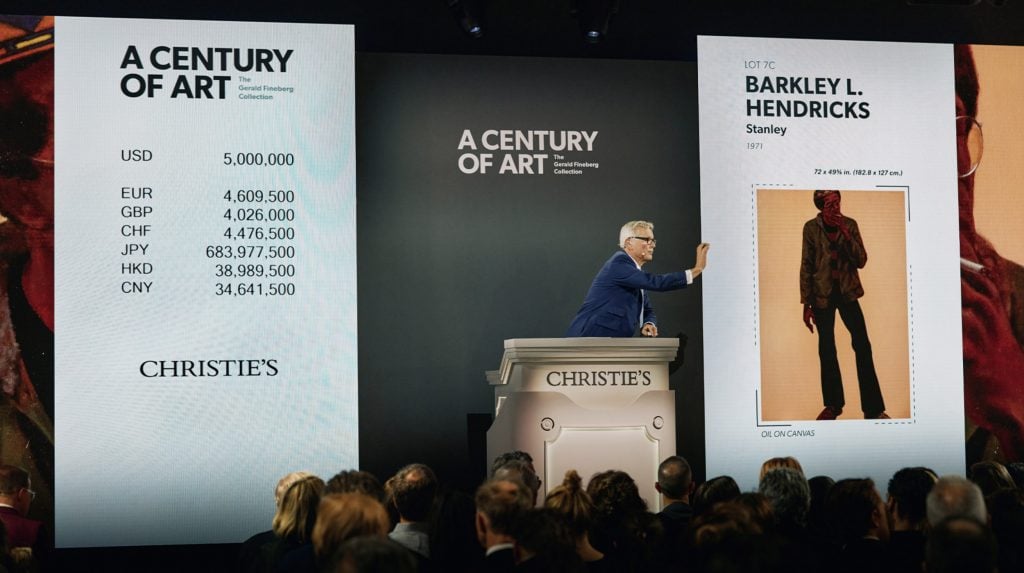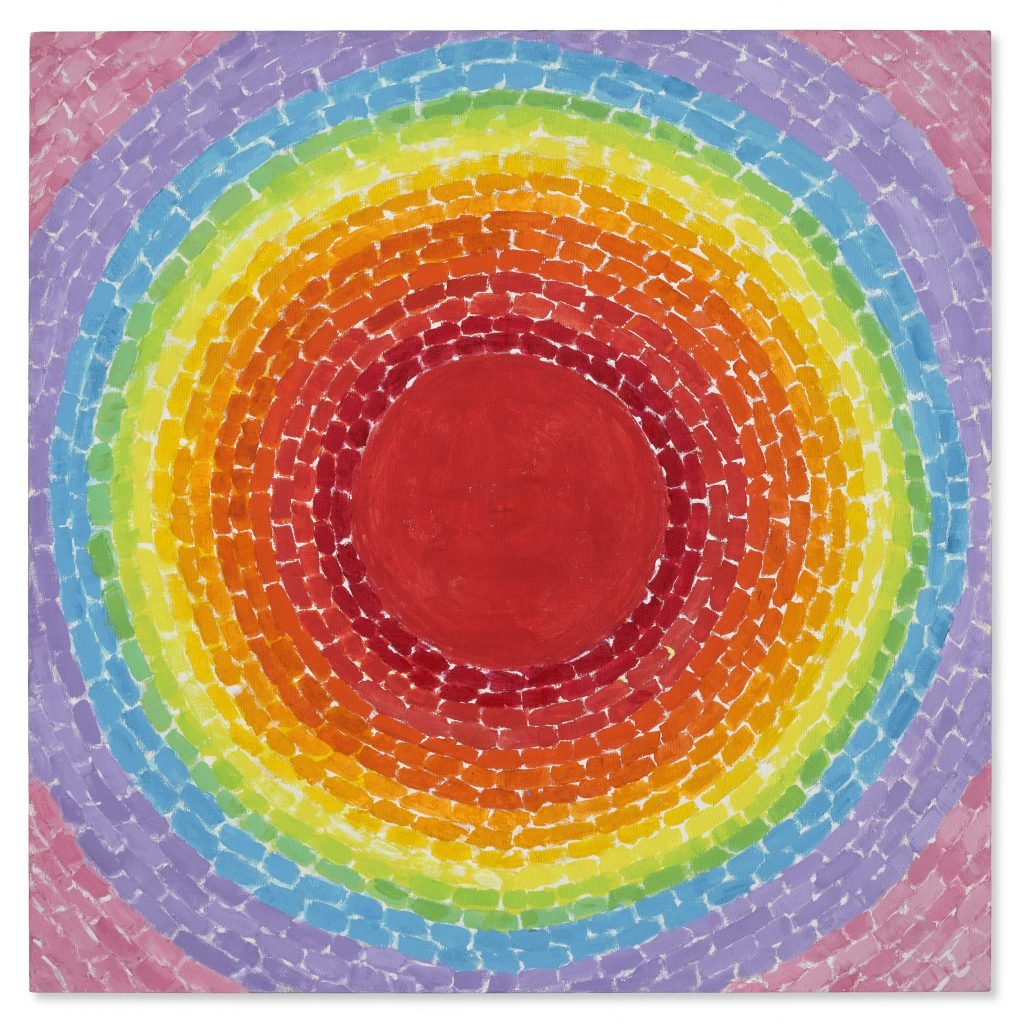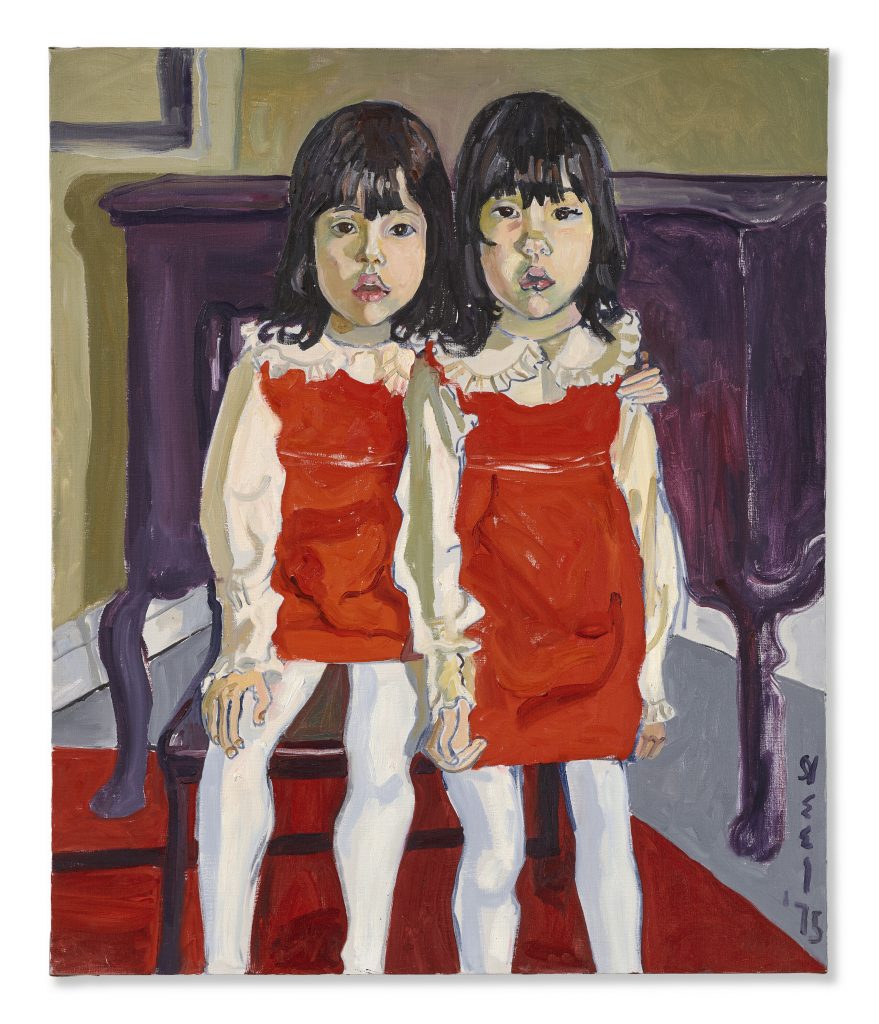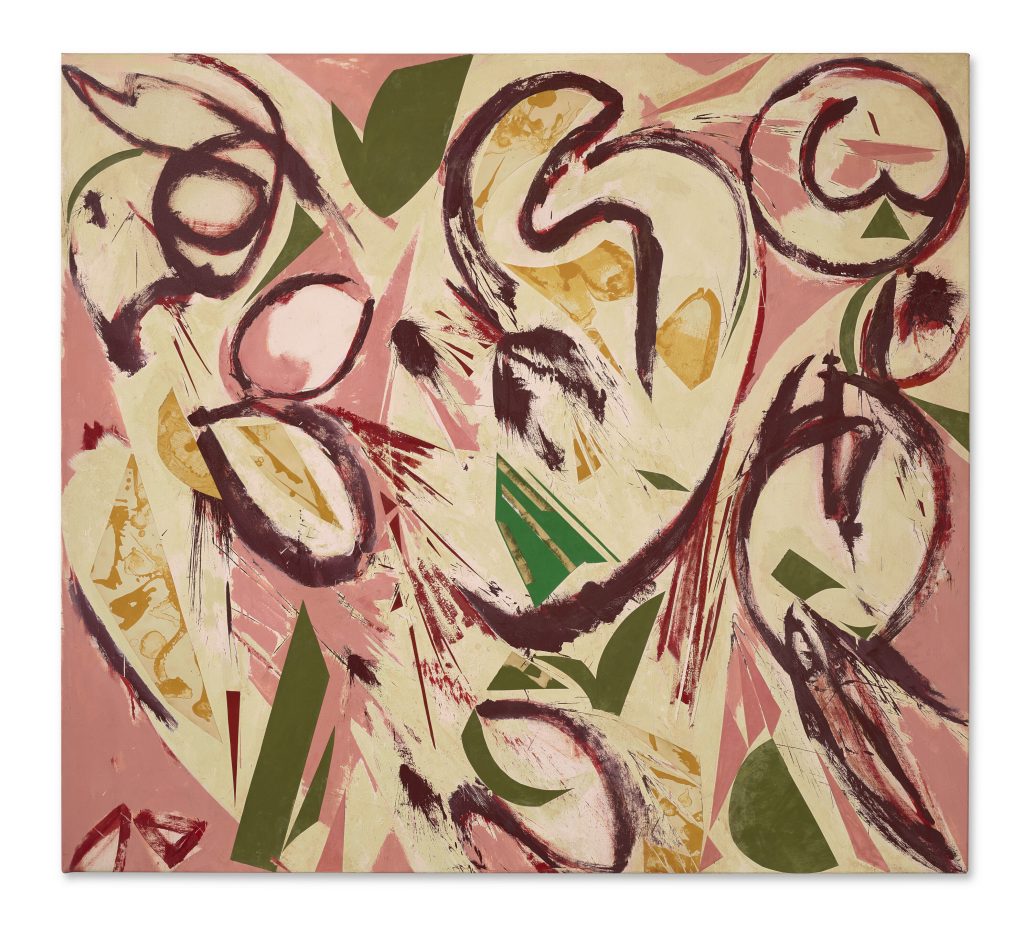Auctions
Correction in Motion? Christie’s First Sale of Gerald Fineberg’s Collection Pulled in $153 Million, Falling Far Short of Presale Estimates
At times, the packed Rockefeller Center salesroom felt like a fire sale.

At times, the packed Rockefeller Center salesroom felt like a fire sale.

Katya Kazakina

After months of fretting about the inevitable correction in the face of rising interest rates, volatile financial markets, the war in Ukraine, and other destabilizing factors, the art market has finally caught up with reality. It happened at the first sale of Gerald Fineberg’s art collection at Christie’s on May 17 in New York.
Billed as “A Century of Art” and anchored by the works of the giants of Modern, postwar, and contemporary art, including Picasso, de Kooning, and Pollock, the event ended up as just the kind of litmus test the art market has been awaiting with trepidation.
At times, the packed Rockefeller Center salesroom felt like a fire sale. Lot after lot failed to reach their low presale estimates. A shocking number of works hammered for a fraction of their projected values. Some, including what once would have been a coveted painting by superstar artist Mark Grotjahn, failed to sell all together.
“You are on the liminal edge of a serious corrective period,” said art adviser Todd Levin. “There’s no two ways about it.”
Sold by the estate of the Boston real estate developer who died last year, the group of 65 lots was as pure—or naked, in the art market parlance—as they come. There were no guarantees, irrevocable bids, or even withdrawn lots.
Estimated at $163 million to $235 million, the auction tallied $153 million, falling short of its presale target range even after Christie’s fees were added to the hammer result of $124.7 million. At the same time, only six lots failed to sell.
“Is there an impact of the macro environment on the art market? Yes,” Christie’s chief executive officer Guillaume Cerutti said after the sale. “That’s the confirmation. We adjusted the reserves to make it work. Is the art market still alive? Yes. This market sent a signal that it still working.”
The strong sell-through rate of 91 percent was a function of lowered reserves, according to Levin.
“Had they not attenuated all those reserves, the sell-through rate of this auction would have been miserable,” he said.

Alma Thomas, A Fantastic Sunset (1970). Courtesy of Christie’s.
“Buyers need a compelling reason to part with their cash these days,” added Skarlet Smatana, director of the George Economou Collection in Athens, Greece. “We are in a new era where money is expensive.”
Still, auctions records were set for five artists: Alma Thomas ($3.9 million), Barkley Hendricks ($6.1 million), Jo Baer ($327,600), Alina Szapocznikow ($907,200), and Milton Resnick ($252,000).
(Final prices include fees; estimates don’t.)
Thomas’s painting A Fantastic Sunset (1970) hammered at $3.2 million. Fineberg bought the work for $2.65 million at Christie’s in 2019 when it was also a record for the Black painter. This time around, the work was estimated at $2 million to $3 million and drew three bidders, including Levin who won it on behalf of a client.
“I‘ve seen a lot of works by Thomas come and go over the year,” Levin said. “In my estimation, this was truly one of the best paintings I’ve seen by her available.”
The sale included two paintings by Alice Neel, who Fineberg began collecting a year after the artist died in 1984. Neel’s portrait of two young girls in white blouses and red jumpers, The De Vegh Twins (1975), fetched $2.6 million, surpassing the estimated $1.2 million to $1.8 million. The second Neel, Pregnant Bette Homitzky (1968), fetched $1.9 million, compared with the presale estimate of $1.5 million to $2 million.

Alice Neel, The De Vegh Twins (1975). Courtesy of Christie’s.
Another highlight was a 1985 assemblage by Jean-Michel Basquiat. Titled Brain, it consists of 27 wood blocks, Xerox paper collage, and paint. Fineberg bought the sculpture from art dealer Diego Cortez in 1990. Estimated at $3 million to $5 million, the work drew three bidders, including art dealer Jeffrey Deitch, who doggedly pursued it, starting at $1.9 million, but ultimately lost to Emily Kaplan, Christie’s head of the evening sale. The final price of $5.6 million surpassed the high estimate.
But such results were the exception. The evening’s top lot, Christopher Wool’s colorful untitled 1993 painting spelling “Fuck em if they can’t take the joke,” hammered at $8.4 million (or $10 million with fees) compared with the estimated range of $15 million to $20 million.
Gerhard Richter’s large photo-painting of blurry nude bathers, Badende (1967), was also estimated at $15 million to $20 million. But it drew just one bidder, hammering at $8 million (or $9.6 million with fees).

Gerhard Richter, Badende (1967). Courtesy of Christie’s.
A late Pablo Picasso painting Buste d’homme lauré (1969) hammered at $7 million (or $8.5 million with fees), against the estimate of $9 million to $12 million. Fineberg bought it for $7.8 million at Sotheby’s in Hong Kong in 2018.
Fineberg was a passionate collector, according to Sara Friedlander, Christie’s head of post-war and contemporary art. “Just when you thought he was in one lane, he would pivot to entirely different genre, gender, period of history, place in the world,” she said. “He was eclectic and in love. Like all great collectors who are in love, that passion took him in different directions.”
The sale, for example, included 16 lots by female artists, including Lee Krasner, Joan Mitchell, and Helen Frankenthaler, long overlooked compared to their male AbEx counterparts.

Lee Krasner, Twelve Hour Crossing, March Twenty-first (c. 1971–81). Courtesy of Christie’s.
But in tonight’s auction, collectors weren’t willing to reach. One untitled painting by Krasner hammered at $3.5 million, below its $6 million low estimate. The second, Twelve Hour Crossing, March Twenty-first (c. 1971–81), hammered at $2.8 million, falling short of its $4 million low estimate.
Alex Rotter, Christie’s chairman of post-war and contemporary art for the Americas, said that the disconnect between the estimates and prices was a result of timing. The estimates were set months earlier, in a different economic environment, shortly after the triumph of the Paul Allen auction.
“We are finding a price level,” Rotter said about the impact of the Fineberg sale. “It gives you a blueprint for where we are.”